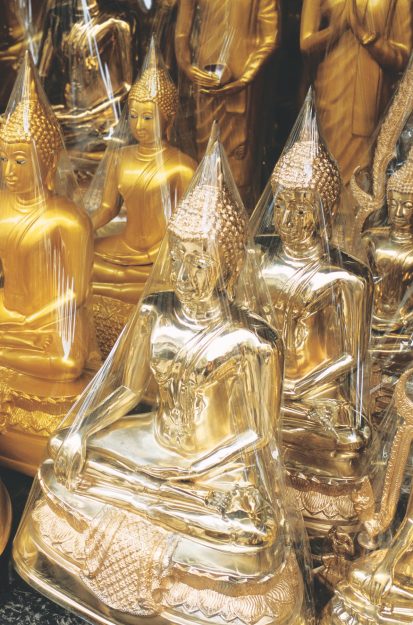A student asked Nakagawa-Soen during a meditation retreat, “I am very discouraged. What should I do?” Soen Roshi replied, “Encourage others.”
This celebrated anecdote, which is included in Michael Wenger’s book 49 Fingers: A Collection of Modern American Koans (see this issue’s “Parting Words“), is one of those deceptively simple stories that, like many of the best spiritual teachings, sparks deeper understanding upon reflection. I’ve been sitting with this story for several months, and I feel like I’m not even close to exhausting its meanings.

Not surprisingly, Soen Roshi’s advice to encourage others has come up for me as we’ve been putting together the current issue of Tricycle. Surely it is our mission to encourage others, but how do we best do that? And to what end? These points may be easy to answer in general terms, but when we’re engaged in the day-to-day work of producing and publishing content, we need to address things with an eye to detail and specificity.
Our Winter issue features an essay by Dharmavidya David Brazier, “Living Buddhism,” in which the author raises challenging questions about how Buddhism is being adapted to Western societies. In particular, he is concerned that we have adopted a technological model of Buddhist practice and now risk isolating meditation techniques from a larger vision of the fulfillment of human ends in the wholeness of life. He argues that by turning Buddhism into a mere set of techniques—a spiritual technology—we are severing our connection to the rich resources of tradition and community and reinforcing the very isolation and self-absorption that it is the job of Buddhism, and religion in general, to counter.
For many (and I am surely one), Buddhism’s emphasis on meditation and the sophistication and power of its techniques has always been at the core of our involvement. Yet any technology, including spiritual technology, is only as good as the way it is used. Buddhist meditation practices grow out of— and are a means to realizing—a vision that seeks to articulate the highest human aspiration. Different traditions articulate different visions, but all base themselves upon vision. If that vision, and the values and attitudes that flow from it, is discarded, then techniques will simply serve whatever values are prevalent in the surrounding culture and the individual habits of each personality. What is then being encouraged? What point would such encouragement serve?
I think each one of us is, at some time, that student asking the teacher what to do when we feel discouraged. Which means we are also the one being asked. Like Soen Roshi himself, we can encourage others, and in this case, keep before us the vision and the promise of the Buddha. Technique can help us to do that better, but it doesn’t start there. It starts with something deeper down than that.
—James Shaheen, Editor and Publisher
Thank you for subscribing to Tricycle! As a nonprofit, we depend on readers like you to keep Buddhist teachings and practices widely available.